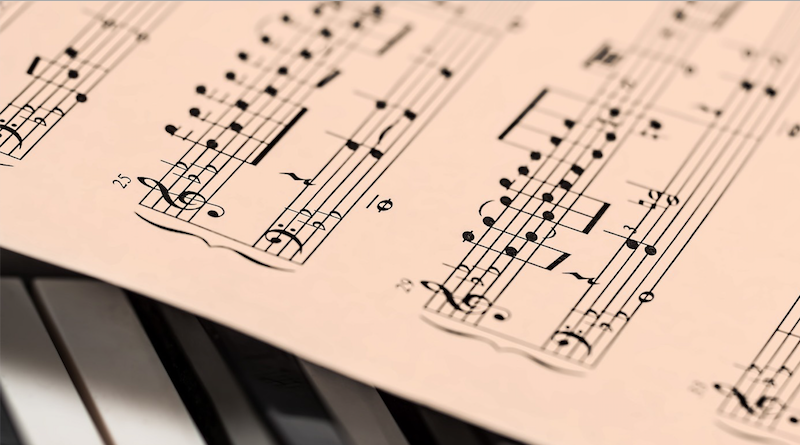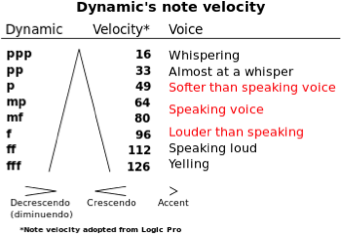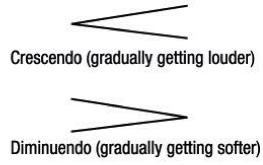Developing Creative Language within Circus–Phase 1.1 Musical Annotation

Over the past few years, I’ve become increasingly frustrated with the lack of tools and language we have as circassians for the creation of work. In every other art form there is a wide range of theories and methods for creating and expressing intention. This project is based around taking ideas from surrounding art forms and transforming them to suit our needs.
Too often the intention of a piece of circus is presented around the technique and not through it, creating our context from external influences –lighting, costume, music, etc–then slotting the technique on top. I think the impetus of expression can arise from the essence of circus: the technique being performed, and the person performing that technique.
The blame for this doesn’t always lie with the director/circassian, more often than not it is the time/money restraints of creation, we simply don’t have the resources to create and rehearse entirely new technique. The main goal of this first phase was, therefore to see how we could work with ‘established technique’,which means technique that the circassian has solid and is stage comfortable with. This can refer to sequences or individual movements.
I worked with five disciplines; juggling, handstands, acrobatics, cyr wheel and aerial hoop–and one musician. In the future I would ideally work with wider range of disciplines, however I would argue that the five used give a satisfactory spectrum.
We focused on musical annotation. These are the notations that appear around sheet music to give an indication of how the music should be played. These can be broken down intoarticulation, expression/texture, tempo and dynamics.
Articulation

Staccato and legato/Compression and expansion
Staccato and legato give a sense of ‘spiky or smooth’ to a note. Technically, when a musician plays a note staccato they play as little of the note as possible and whilst playing legato they play as much of the note as possible. Its important to comment that the note still has the same duration when either is applied although it can seem to take longer or shorter when heard.
Our transposition into circus was to take the idea of a singular movement in place of the note and to try and eithercompress (staccato) orexpand (legato). This was accomplished by trying to keep the duration of the movement whilst changing how our body does the movement, then applying this to all or some of the movements in a sequence. Throughout every discipline there was a dramatic change in the movement, and applying either idea to a longer sequence of established technique changed it and gave a whole new feel and sense of intention. We quickly began to play with shifting from compression to expansion within one sequence and suddenly we had a new tool of creation. The idea of this wasn’t just to make our movement ‘spikey’ or ‘smooth’ but to really transpose the theory behind these ideas into circus.
Expression/Texture
Expression and textural annotations are suggestions put in by the composer to offer an idea of how they think the musician should interpret the music. These range from Furioso (Furiously) to Burlando (in a playful manner). There are any number of these terms, coined by composers and generally in Italian, French or German. You can find a comprehensive list of them here.
This concept was a surprisingly challenging one. We figured we would be able to just take the words and apply them directly to our technique. However, this seemed so fake and unauthentic that it made both the watchers and the circassian feel very awkward. The words weren’t influencing the technique; rather each time the artist stopped they would try and make a furious face.
We asked Danny, the musician, to play through a variety of expressional words and watched and listened carefully. Our attention was most focused on how his interaction with his guitar changed. The words were being used through his fingers, the expression was being transmitted through his interaction with his instrument, and it wasn’t large and garish but rather many small parts to make up a whole. We re-approached our technique with a new concept, the words were only to be expressed when the physical contact with the object, floor or space changed. Here we really began to see something new, and it felt authentic. This idea is, I believe extremely important; and deserves to be taken much further.
Tempo/Dynamics
Tempo and volume raised an interesting question within the research. How do we define intensity in our technique?
Tempo is an idea that has already been greatly explored within circus and was probably the easiest idea we worked on in terms of transposition. It’s clear, and has already been explored that going faster or slower will easily manipulate established technique.
 Volume was a confounding idea for us, how we transpose the idea of being loud or quiet into our technique was difficult and lead us to the question, what is intensity of a movement? An argument was presented that it is the level of difficulty that gives a movement its intensity, another that it is the visceral feeling given to the audience that creates intensity. However, we were trying to find an interpretation of intensity that we would be able to manipulate, as volume is such a clearly essential part of how music is played and heard. We finally arrived at a not entirely satisfactory definition: intensity is the amount of energy given to a movement.
Volume was a confounding idea for us, how we transpose the idea of being loud or quiet into our technique was difficult and lead us to the question, what is intensity of a movement? An argument was presented that it is the level of difficulty that gives a movement its intensity, another that it is the visceral feeling given to the audience that creates intensity. However, we were trying to find an interpretation of intensity that we would be able to manipulate, as volume is such a clearly essential part of how music is played and heard. We finally arrived at a not entirely satisfactory definition: intensity is the amount of energy given to a movement.
This encompassed the two main arguments of pre-existing intensity as its clear that some technique cannot be more or less intense. For example, a back full or a 5 club pirouette demands a level of energy from the circassian that cannot be changed.
This definition of intensity did allow us to classify certain movements with either high or low intensity and also gave us an ability to start manipulating established technique. Giving more or less energy in unexpected places was satisfying to watch and often came out with pleasantly surprising results.
 One method that we can completely steal is the concept of crescendos and diminuendos. In the most basic form, these are markings for increasing or decreasing the volume of a phrase. Again this is something that we often do naturally without realising, however being conscious of it allows us to manipulate what we are doing. There are many varieties of crescendos and diminuendos. I recommend looking into false starts, swells, trick crescendos and inverse swells.
One method that we can completely steal is the concept of crescendos and diminuendos. In the most basic form, these are markings for increasing or decreasing the volume of a phrase. Again this is something that we often do naturally without realising, however being conscious of it allows us to manipulate what we are doing. There are many varieties of crescendos and diminuendos. I recommend looking into false starts, swells, trick crescendos and inverse swells.
Conclusion
After annotation, we started to look at improvisation and composition. However, within the time we had I don’t feel sufficient research was done to fully present anything. I realise that many of the ideas I have presented seem basic or perhaps vague, however, since completing this research I have both created new work and taught in higher education using these tools. In both cases they were valuable and gave new aspects to my pedagogy of teaching and creation. They gave me a greater understanding what I do, but more importantly how I do it.
I hope to continue this project, furthering the exploration of musical techniques, as well as looking further afield to dance, theatre, pottery, carpentry and magic.
If you are interested in discussing or helping take these ideas forward, please do get in touch.
I would like to thank the artists involved: Chris Thomas, Joana Dias, Ariane Verdigel And Danny Arbiter, and also thanks to the National Centre for Circus Arts (London), who supported this research through the Lab:time programme.
Editor's Note: At StageLync, an international platform for the performing arts, we celebrate the diversity of our writers' backgrounds. We recognize and support their choice to use either American or British English in their articles, respecting their individual preferences and origins. This policy allows us to embrace a wide range of linguistic expressions, enriching our content and reflecting the global nature of our community.
🎧 Join us on the StageLync Podcast for inspiring stories from the world of performing arts! Tune in to hear from the creative minds who bring magic to life, both onstage and behind the scenes. 🎙️ 👉 Listen now!
